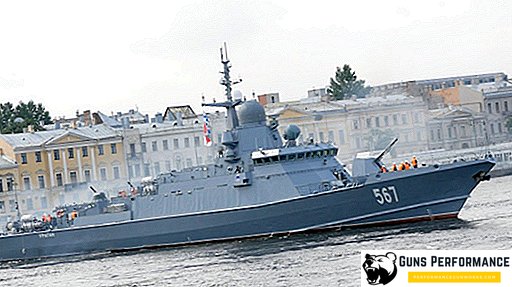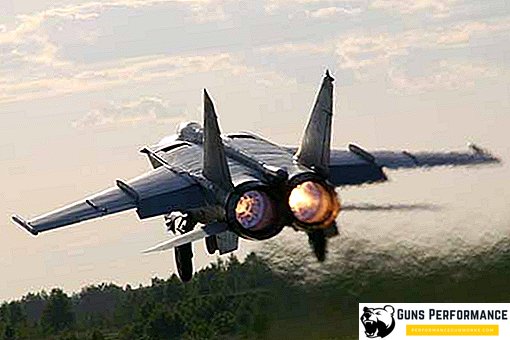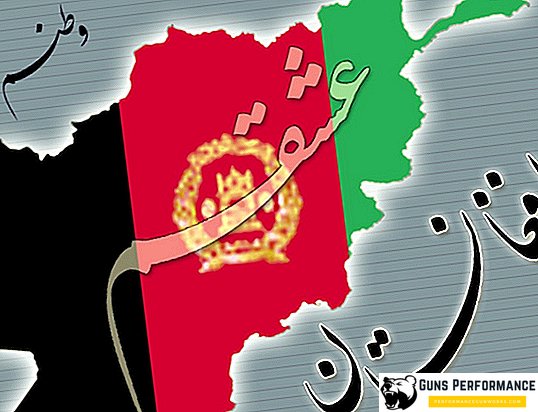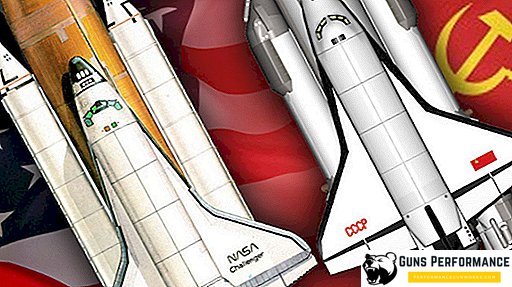
On March 23, 1983, the fortieth US President Ronald Reagan told the Americans about the beginning of a large-scale anti-missile defense system, which is guaranteed to be able to protect the country from the Soviet nuclear threat. "I gave the order to undertake a comprehensive and intensive efforts to conduct a long-term research and development program in order to achieve our ultimate goal of eliminating the threat posed by strategic missiles with nuclear warheads," said the American leader in a statement. This date can be called the apotheosis of the Cold War.
This project was called the Strategic Defense Initiative (SOI), but with the light hand of journalists, it became better known to the public as the "Star Wars program." There is a legend that the idea of such a project came to Reagan’s mind after watching the next series of the space opera by George Lucas. Despite the fact that the PIO was never implemented, it became one of the most famous military programs in the history of mankind and had a significant impact on the outcome of the Cold War.

This program envisaged the creation of a powerful anti-missile "umbrella", the main elements of which were in Earth orbit. The main objective of the Strategic Defense Initiative was to gain complete supremacy in outer space, which would allow the destruction of Soviet ballistic missiles and warheads at all stages of their trajectory. “Who owns the cosmos, he owns the world,” advocates of this program loved to repeat.
Initially, the “Star Wars program” was exclusively dealt with by the Americans, but a little later the main US allies in the NATO bloc joined it, primarily Britain.
To say that the Strategic Defense Initiative was an ambitious project is to say nothing. By its complexity, it can not be compared with even such famous programs as the "Manhattan Project" or "Apollo." Only a small part of the PIO components was supposed to use more or less known and proven military technologies (anti-missiles), but the basis for the striking power of Star Wars was to be a weapon developed on the basis of new physical principles.
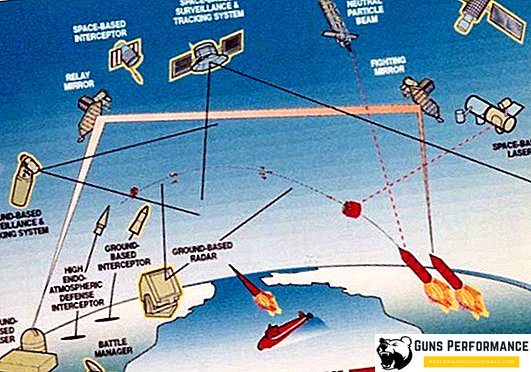
The strategic defense initiative was never implemented in practice. The scale of the technical problems faced by the developers forced the American leadership to quietly curtail the program ten years after its spectacular presentation. However, she did not give almost any real results. The sums spent on the implementation of Star Wars are impressive: some experts believe that the PIO cost the US taxpayer $ 100 billion.
Naturally, in the course of work on the program, new technologies and design solutions were obtained and developed, however, given the amount of investments and a wide PR campaign, this does not seem to be enough. Many developments were later used to create the existing US missile defense system. The main thing that American designers and the military understood is that at the current level of technology development, non-traditional methods of intercepting ICBMs are not effective. Therefore, the current missile defense is built on the old proven anti-missile. Lasers, railguns, and kamikaze satellites today are more curious exotic than real and effective weapons.
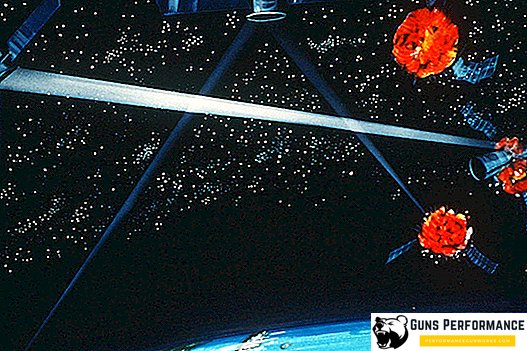
However, despite the almost complete lack of technical results, the PIO had very important political consequences. First, the beginning of the development of the space missile defense system further worsened relations between the two superpowers - the United States and the USSR. Secondly, this program has further tightened the controversy around medium-range ballistic missiles, which at that moment were actively deploying both opposing sides. Well, the most important is the fact that the Soviet military and political leadership believed in the reality of the implementation of the Strategic Defense Initiative and even more desperately joined the arms race, for which the USSR had simply no strength at that time. The result was sad: the economy of a huge country could not withstand such a surge, and in 1991 the USSR ceased to exist.
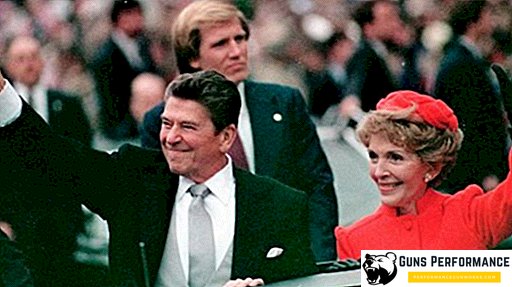
Soviet scientists have repeatedly informed the leadership of the impossibility of implementing the SDI program, but the Kremlin elders simply did not want to listen to them. So, if we consider the Strategic Defense Initiative as a large-scale bluff by the American special services (this is a favorite topic of domestic conspiracy theorists), then this strategy has indeed been a success. However, it is likely that the truth is somewhat more complicated. It is unlikely that the United States would begin such an expensive program, only to ruin the Soviet Union. She brought significant political bonuses to President Reagan and his team, as well as huge profits from the military-industrial complex. So the lack of real results of the Strategic Defense Initiative, probably, was not enough for many.
Finally, we can say that the United States has not abandoned the idea of creating an anti-missile umbrella to protect their country from a possible nuclear strike (including a massive one). Currently, a multi-level missile defense system is in full swing, which is much more real than President Reagan’s Star Wars. Such activity of Americans causes no less concern and irritation in the Kremlin than thirty years ago, and there is a high probability that now Russia will be forced to join the new arms race.
Below is a description of the main components of the PIO system, the reasons why one or another component was not implemented in practice, as well as how the ideas and technologies developed in the program developed.
SOI program history
The development of missile defense systems began almost immediately after the end of the Second World War. The Soviet Union and the United States appreciated the effectiveness of the German "weapon of retaliation" - the V-1 and V-2 missiles, so by the end of the 1940s both countries began creating protection against the new threat.
Initially, the work was more theoretical, since the first combat missiles did not have an intercontinental range and could not hit the territory of a potential enemy.
However, the situation soon changed dramatically: at the end of the 50s, both the USSR and the USA had intercontinental ballistic missiles (ICBMs) capable of carrying a nuclear charge to the other hemisphere of the planet. From this point on, it was rockets that became the main means of delivering nuclear weapons.
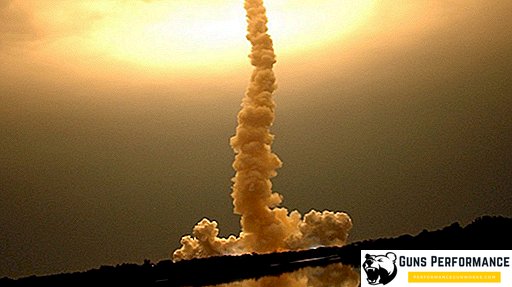
In the USA, the first strategic missile defense system MIM-14 Nike-Hercules was put into operation in the late 50s. The defeat of ICBM warheads occurred at the expense of antimissiles with a nuclear warhead. Replaced "Hercules" came more advanced complex LIM-49A Nike Zeus, which also destroyed enemy warheads with thermonuclear charges.
Work on the creation of a strategic missile defense was carried out in the Soviet Union. In the 70s, the A-35 missile defense system was put into service, designed to protect Moscow from a missile attack. Later it was modernized, and until the collapse of the USSR, the capital of the country was always covered with a powerful anti-missile shield. For the destruction of enemy ICBMs, Soviet missile defense systems also used anti-missiles with a nuclear warhead.
In the meantime, the buildup of nuclear arsenals was proceeding at an unprecedented pace, and by the early 1970s, a paradoxical situation had emerged, which contemporaries called the “nuclear dead end.” Both warring parties had so many warheads and missiles to deliver them that they could destroy their enemy several times. The way out of it was seen in the creation of a powerful missile defense, which could reliably protect one of the parties to the conflict in the course of a full-scale exchange of nuclear missile strikes. A country with such a missile defense system would gain a significant strategic advantage over its opponent. However, the creation of such a defense turned out to be an unprecedentedly complex and expensive task, surpassing any military-technical problems of the twentieth century.
In 1972, the most important document was signed between the USSR and the USA - the Treaty on the Limitation of Anti-Ballistic Missile Defense Systems, which today is one of the foundations of international nuclear security. According to this document, each side could deploy only two missile defense systems (later the number was reduced to one) with a maximum ammunition of one hundred antimissiles. The only Soviet missile defense system defended the capital of the country, while the Americans covered the area of deployment of their ICBMs with antimissiles.
The meaning of this treaty was that, not being able to create a powerful missile defense system, each of the parties was defenseless before a crushing retaliation, and this was the best guarantee against rash decisions. This is called the principle of mutual guaranteed destruction, and it was he who for many decades reliably protects our planet from nuclear Armageddon.
It seemed that this problem was solved for many years and the established status quo satisfied both parties. That was until the beginning of the next decade.
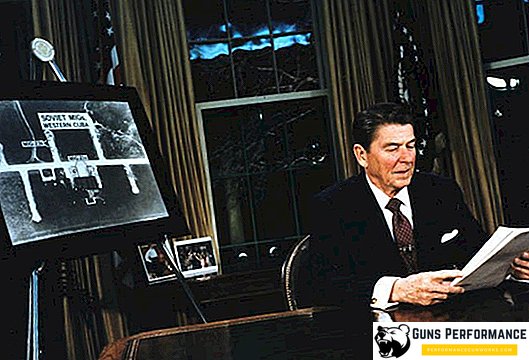
In 1980, the Republican politician Ronald Reagan won the US presidential election, who became one of the most principled and irreconcilable opponents of the communist system. In those years, Soviet newspapers wrote that "the most reactionary forces of American imperialism led by Reagan" came to power in the United States.
In 1982, a special space command was created as part of the US Air Force, which was engaged in the development and deployment of weapons systems in near-earth orbit. And in March 1983, Reagan publicly announced the beginning of the creation of a powerful missile defense system that can protect US territory from the Soviet nuclear threat. In 1984, the Organization for the Implementation of the Strategic Defense Initiative (OIOI) was created, which was involved in project management.
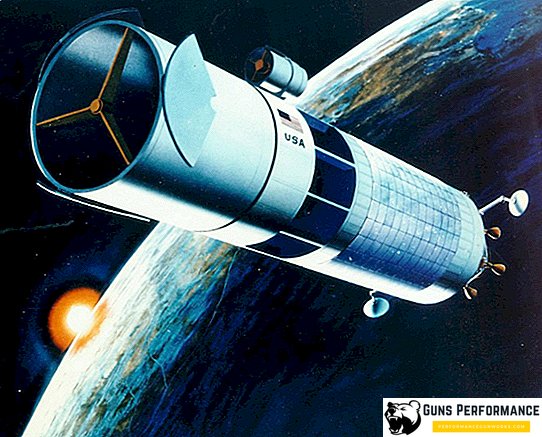
A few words should be said about the international situation of that time. 1983 can be called the real peak of the Cold War. For four years Soviet troops fought in Afghanistan, and the United States and other Western countries supported the Mujahideen with weapons and money, the number of NATO and Warsaw Pact forces reached its maximum, the nuclear arsenals of the two superpowers were literally crammed with warheads and ballistic missiles. ". The hands of the Doomsday hours showed three minutes to midnight.
A few weeks (March 3, 1983), before the announcement of the start of the SDI, Reagan called the Soviet Union the "Empire of Evil."
The strategic defense initiative almost immediately attracted great public attention, not only in the United States, but also in the rest of the world. In America itself, a broad PR campaign of the new government initiative started. In the movies and on television there were videos that described the principles of the new missile defense system. The man in the street had the impression that the implementation of the Strategic Defense Initiative was a matter of several years, after which the Soviets would be very tight.
Very soon, not only American firms and research centers began to be involved in the development of the program, but also companies from the United Kingdom, Germany, Japan, Israel and other US ally countries. By 1986, the management of the PIO program concluded more than 1,500 contracts with 260 contractors around the world. The Germans developed guidance and stabilization systems for lasers and railguns, recognition systems and radar stations. Britain was engaged in the creation of new supercomputers, software development and power units. In Italy, developed new composite materials, elements of the control system and kinetic weapons.
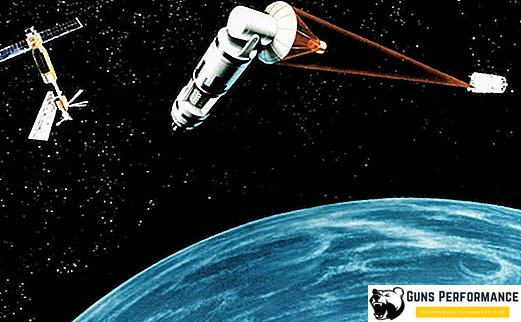
Initially, many experts (including Soviet experts) pointed out that the draft Strategic Defense Initiative is a big American bluff that cannot be implemented. Despite this, the leadership of the USSR seriously accepted the American plans and began to look for an adequate response to them. In 1987, it became known that the Soviet Union was developing a similar program. Modern historians are still arguing about whether Ronald Reagan himself believed in the reality of his plans or frankly bluffing.
However, in 1991, the USSR collapsed, the Cold War was over, and spending huge amounts of money on a war in space no longer had any meaning. In 1993, the US Secretary of Defense officially announced the termination of the Strategic Defense Initiative. Today, the Missile Defense Agency of the United States is developing missile defense systems, including Euro missile defense. Few people know that it was originally called the Office of Strategic Defense Initiative. The leaders of the Missile Defense Agency, like thirty years ago, explain to the townsfolk that they are solving a most complex technical task: they learn to shoot down one bullet with another.
SOI components
The strategic defense initiative was conceived as an integrated, deep-echeloned missile defense system, most of whose elements were located in space. Moreover, the main means of destruction of the system had to work on the so-called new physical principles. They had to shoot down enemy missiles at all four stages of their trajectory: at the initial (immediately after take-off), at the time of the separation of combat units, at the ballistic stage and at the stage of the introduction of warheads into the atmosphere.
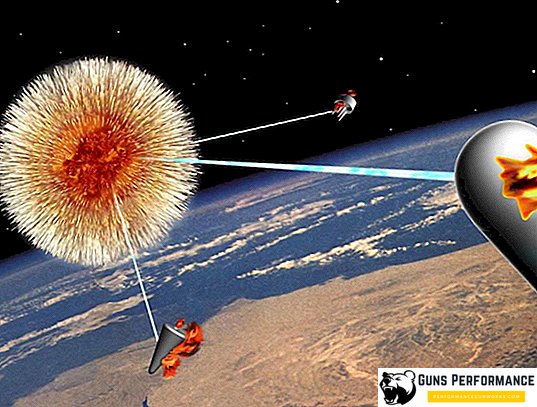
Nuclear pumped lasers. X-ray lasers pumped from a nuclear explosion were proposed by the developers of the PIO almost as a panacea for a possible Soviet missile attack. Such a laser is a nuclear charge with special rods mounted on its surface. After the explosion, most of the energy is channeled through these guides and turns into a directional stream of powerful hard radiation. X-ray laser pumped by a laser explosion and today is the most powerful laser device, although, for obvious reasons, is a disposable device.
The author of this idea was the physicist Edward Teller, who previously led the creation of the American thermonuclear bomb. The estimated power of such weapons was so great that they wanted to destroy even ground objects through the entire atmosphere.
Nuclear charges were planned to be launched into orbit using conventional ICBMs immediately after the launch of an enemy missile attack. Each of them had to have several rods in order to simultaneously hit a whole group of ballistic targets.
In the mid-1980s, tests of these weapons began in the United States, but they raised so many complex technical problems that it was decided to abandon the practical implementation of the project.
Work on the creation of X-ray lasers continues in our time, not only in the West, but also in Russia. However, this problem is so complex that in the next decade we will definitely not see practical results in this area.

Chemical lasers. Another "unconventional" component of the PIO was to be chemical-pumped lasers placed in a near-earth orbit, in the air (on airplanes) or on the ground. The most noteworthy were the "death stars" - orbital stations with laser installations ranging from 5 to 20 mW. They were supposed to destroy ballistic missiles in the early and middle sections of their trajectory.
The idea was very good - at the initial stages of the rocket flight it is very noticeable and vulnerable. The cost of one laser shot is relatively small and the station can produce a lot of them. However, there was one problem (it has not been solved today): the lack of sufficiently powerful and lightweight power plants for such weapons. In the mid-80s, the MIRACL laser was created, even quite successful tests were carried out, but the main problem was never solved.
Air-based lasers planned to be installed on transport aircraft and destroy ICBMs with their help immediately after takeoff.
An interesting project was another component of the Strategic Defense Initiative - land-based lasers. In order to solve the problem of low power supply of laser combat complexes, they were suggested to be placed on the ground, and the beam transferred to orbit using a complex system of mirrors, which would direct it to take-off missiles or warheads.
Thus, a whole complex of problems was solved: with pumping energy, heat sink, security. However, the placement of the laser on the earth's surface led to huge losses during the passage of the beam through the atmosphere. Было подсчитано, что для отражения массированной ракетной атаки, нужно использовать не менее 1 тыс. гигаватт электроэнергии, собранной в одной точке буквально за несколько секунд. Энергетическая система США просто бы не "потянула" такую нагрузку.
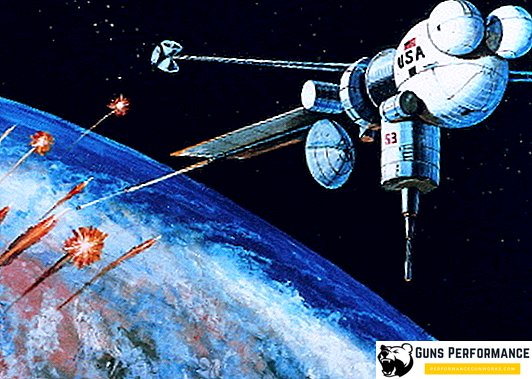
Пучковое оружие. Под этим средством поражения понимались системы, уничтожающие МБР потоком элементарных частиц, разогнанных до околосветовых скоростей. Подобные комплексы должны были выводить из строя электронные системы ракет и боеголовок. При достаточной мощности потока пучковое оружие способно не только выводить из строя автоматику противника, но и физически уничтожать боевые блоки и ракеты.
В середине 80-х годов были проведены несколько испытаний суборбитальных станций, оснащенных пучковыми установками, однако из-за их значительной сложности, а также неумного энергопотребления эксперименты были прекращены.

Рельсотроны. Это вид оружия, которое разгоняет снаряд за счет силы Лоуренса, его скорость может достигать нескольких километров в секунду. Рельсотроны также планировали размещать на орбитальных платформах или в наземных комплексах. В рамках СОИ существовала отдельная программа по рельсотронам - CHECMATE. В ходе ее реализации разработчикам удалось добиться заметных успехов, но создать работающую систему ПРО на базе электромагнитных пушек так и не получилось.
Исследования в области создания рельсотронов продолжились и после закрытия программы СОИ, но только несколько лет назад американцы получили более-менее приемлемые результаты. В ближайшем будущем электромагнитные пушки будут размещены на боевых кораблях и наземных системах ПРО. Создать орбитальный рельсотрон не получится и в наши дни - слишком много энергии необходимо для его работы.
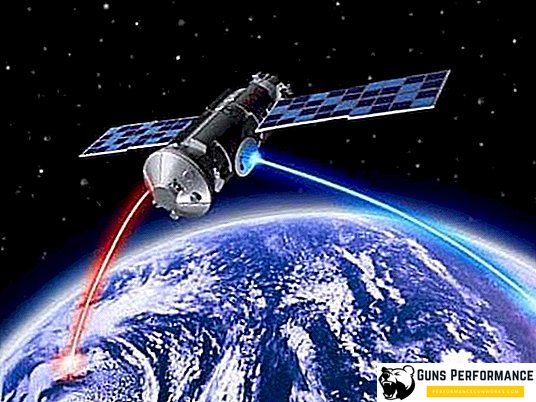
Спутники-перехватчики. Еще одним элементом, который планировали включить в систему СОИ. Поняв всю сложность создания лазерных систем перехвата ракетного оружия, в 1986 году конструкторы предложили сделать основным компонентом системы СОИ миниатюрные спутники-перехватчики, которые поражали бы цели прямым столкновением.
Этот проект получил название "Бриллиантовая галька". Их планировали запустить огромное количество - до 4 тыс. штук. Эти "камикадзе" могли атаковать баллистические ракеты на взлете или на этапе отделения боеголовок от МБР.
По сравнению с остальными проектами Стратегической оборонной инициативы, "Бриллиантовая галька" был технически выполним и имел приемлемую стоимость, поэтому вскоре он стал рассматриваться в качестве одного из основных элементом системы. Кроме того, в отличие от орбитальных станций, крошечные спутники-перехватчики были малоуязвимы для удара с земли. Этот проект базировался на проверенных технологиях и не требовал серьезных научных изысканий. Однако по причине окончания Холодной войны он так и не был реализован.
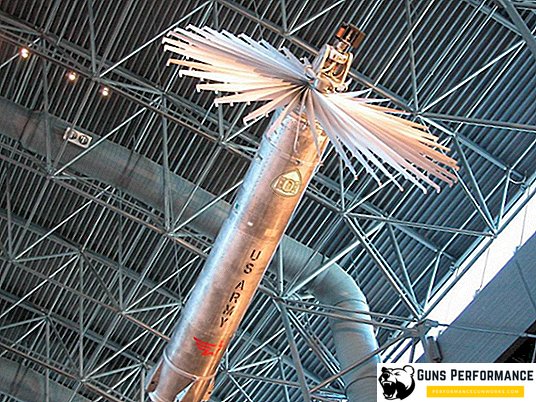
Противоракеты. Наиболее "классический" элемент программы СОИ, изначально его планировали использовать в качестве последнего рубежа противоракетной обороны. Еще в начале программы было принято решение отказаться от традиционных для этого времени ядерных боевых частей противоракет. Американцы посчитали, что взрывать мегатонные заряды над своей территорией - это не самая хорошая идея и занялись разработкой кинетических перехватчиков.
Однако они требовали точного прицеливания и определения цели. Чтобы немного облегчить задачу компанией Lockheed была создана специальная раскладная конструкция, которая за пределами атмосферы разворачивалась наподобие зонтика и увеличивала вероятность поражения цели. Позже этой же фирмой была создана противоракета ERIS, которая в качестве перехватчика имела надувную конструкцию октагональной формы с грузами на концах.
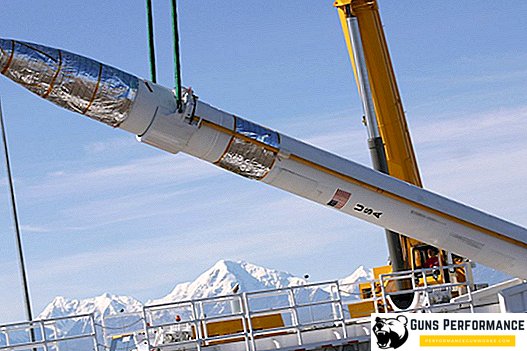
Проекты создания противоракет были закрыты в начале 90-х годов, однако благодаря программе СОИ американцы получили огромный практический материал, который был использован уже при реализации проектов системы ПРО.
Советский ответ "Звездным войнам"
А как же Советский Союз реагировал на развертывание системы СОИ, которая, по замыслу ее создателей, должна была лишить его возможности нанести по своему главному противнику сокрушительный ядерный удар?
Естественно, что активность американцев была сразу же замечена высшим советским руководством и воспринята им, мягко говоря, нервно. В СССР приступили к подготовке "асимметричного ответа" на новую американскую угрозу. И, надо сказать, что на это были брошены лучшие силы страны. Основную роль в его подготовке сыграла группа советских ученых под руководством вице-президента Академии наук СССР Е. П. Велихова.
В рамках "асимметричного ответа" СССР на развертывание программы СОИ в первую очередь планировалось повысить защищенность пусковых шахт МБР и стратегических ядерных ракетоносцев, а также общую надежность системы управления советскими стратегическими силами. Вторым направлением нейтрализации заокеанской угрозы стало повышение способности советских СЯС преодолевать многоэшелонированную систему противоракетной обороны.
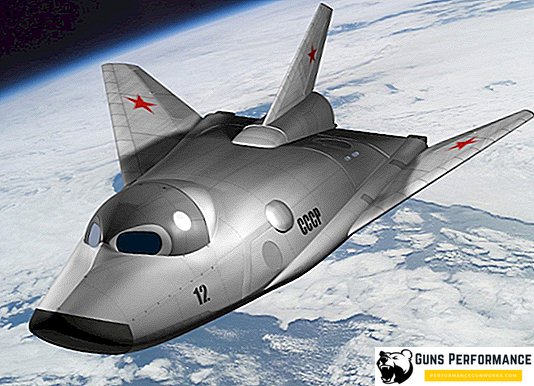
В единый кулак были собраны все средства тактического, оперативного и военно-стратегического порядка, что давало возможность нанести достаточный удар даже при упреждающей атаке со стороны противника. Была создана система "Мертвая рука", которая обеспечивала запуск советских МБР даже при уничтожении противником высшего руководства страны.
Кроме всего вышеперечисленного, велись работы и над созданием специальных инструментов для борьбы с американской ПРО. Некоторые элементы системы были признаны уязвимыми для радиоэлектронного подавления, а для уничтожения элементов СОИ космического базирования разрабатывались различные типы противоракет с кинетическими и ядерными боевыми частями.
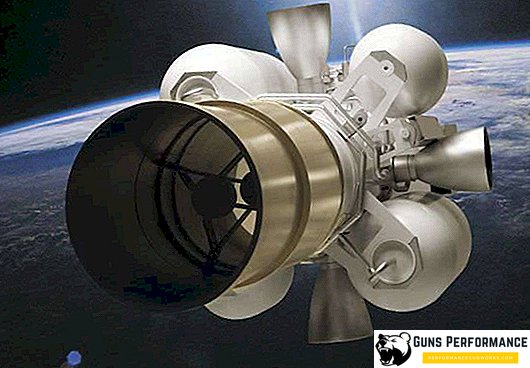
В качестве средств противодействия космической составляющей системы СОИ рассматривались высокоэнергетические наземные лазеры, а также космические аппараты с мощным ядерным зарядом на борту, который мог не только физически уничтожить орбитальные станции противника, но и ослепить его РЛС.
Также против орбитальных станций группа Велихова предлагала использовать металлическую шрапнель, запущенную на орбиту, а для борьбы с лазерами - аэрозольные облака, поглощающие излучение.
Однако главным было другое: на момент объявления президентом Рейганом о создании программы СОИ у Советского Союза и США было по 10-12 тыс. ядерных боезарядов только на стратегических носителях, которые даже теоретически нельзя остановить никакой противоракетной обороной даже в наши дни. Поэтому, несмотря на широкую рекламную кампанию новой инициативы, американцы так и не вышли из Договора по ПРО, а "Звездные войны" тихо канули в Лету в начале 90-х.


